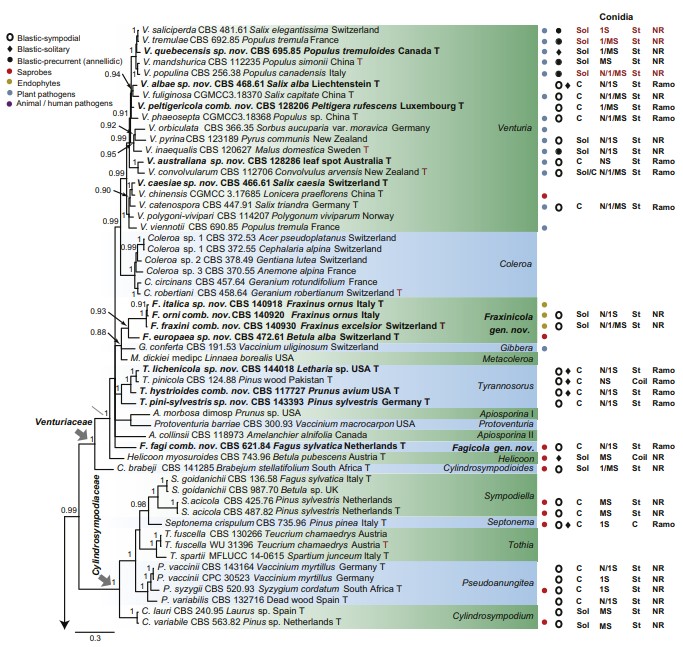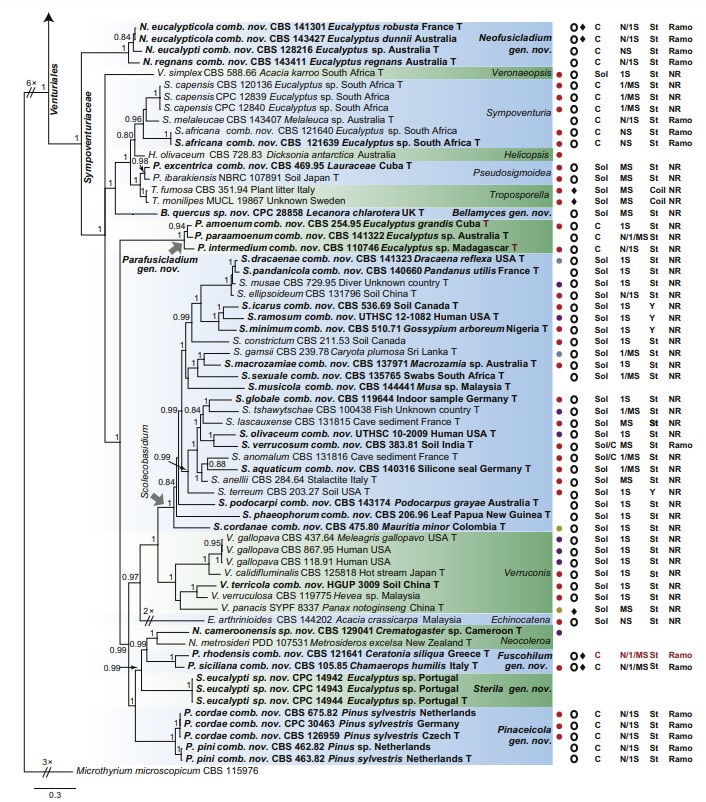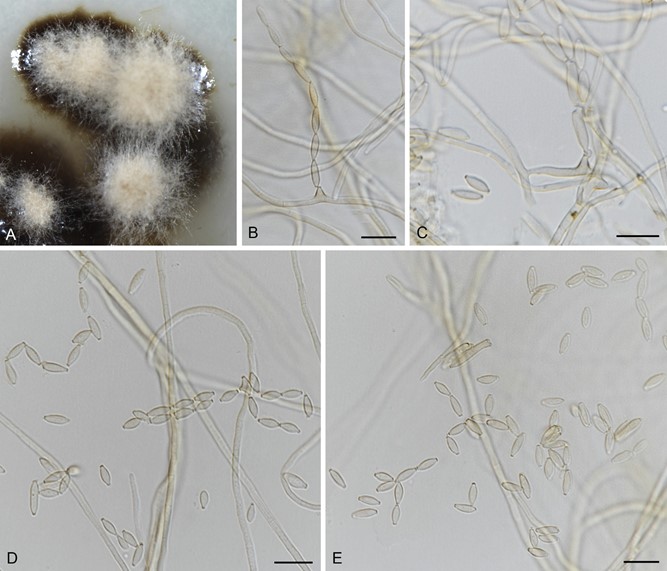Neofusicladium eucalypti (Crous & R.G. Shivas) Crous, M. Shen & Y. Zhang ter, comb. nov.
MycoBank number: MB 831541; Index Fungorum number: IF 831541; Facesoffungi number: FoF 12041; Fig. 5.
Basionym: Fusicladium eucalypti Crous & R.G. Shivas, Persoonia 25: 149. 2010.
Description and illustration: Crous et al. (2010).
Typus: Australia, Queensland, Brisbane, Mt. Coot-tha, Bardon Trail, on leaves of Eucalyptus sp. (Myrtaceae), 12 Jul. 2009, P.W. Crous & R.G. Shivas (holotype CBS H-20497, culture ex-type CBS 128216 = CPC 17324).
Notes: Neofusicladium eucalypti was first described (as Fusicladium eucalypti) from Eucalyptus leaves in Australia (Crous et al. 2010). Its dimorphic conidiophores can serve as a diagnostic character for this species (Crous et al. 2010). This species is sister to N. eucalypticola in Fig. 1.

Fig 1. Consensus phylogram (50 % majority rule) of 691 952 trees resulting from a Bayesian analysis of the combined alignment of ITS, LSU, tef1, tub2 and rpb2 sequences of Venturiales. Bayesian posterior probabilities (PP) > 0.80 are shown at the nodes and the scale bar represents the expected changes per site. Some branches were shortened to facilitate layout. The tree was rooted with Microthyrium microscopicum (CBS 115976). Culture collection numbers, substrates and countries are indicated behind the species names. Those highlighted in bold are new taxa or new combinations proposed in this study, and type strains are marked with “T” (ex-type in black, ex-epitype in red). Relevant morphological characteristics plotted are abbreviated as follows: Sol – conidia solitary, C – conidia in chains, NS – aseptate conidia, 1S – 1-septate conidia, MS – multi- septate conidia (septa ≥ 2), St – straight or slightly curved conidia, Coil – coiled conidia, Y – Y-shaped conidia; Ramo – ramoconidia present, NR – ramoconidia not observed; ? – asexual morphology not available (either from references or from sporulation induced in this study); and morphological characters plotted in red means strains failed to sporulate in this study and plotted values are taken from the original description, observation of this study or related references. Other characteristics are explained in the legend.

Fig 1. (Continued).

Fig. 5. Neofusicladium eucalypti (culture ex-type CBS 128216) asexual morph. A. Colony on OA. B– D. Concatenated conidia arising from hypha. E. Pale brown, fusiform and aseptate conidia. Scale bars: B– E = 10 μm.
